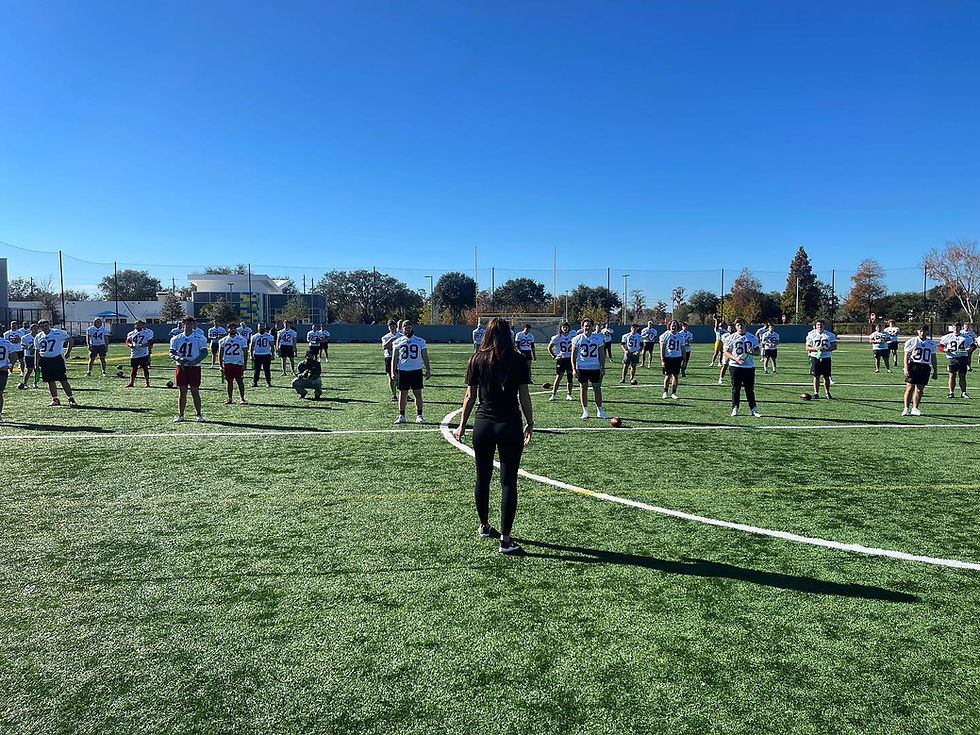The Physiology of Stress: How Staying in Fight-or-Flight Impacts Pain, Recovery, and Performance
- Jill Magee
- Oct 21
- 3 min read
Chronic stress and fight-or-flight activation can limit recovery, cause pain, and block performance gains. Learn how nervous system regulation through polyvagal theory (Stephen Porges-PHD) can help athletes perform and recover better.
In high-performance environments, stress is often seen as part of the game, a necessary ingredient for success. But when the body and mind stay in constant overdrive, it’s not a sign of strength; it’s a signal of imbalance.According to polyvagal theory, our nervous system constantly scans the world for cues of safety or threat. When it perceives danger; physical, emotional, or environmental, it shifts into the sympathetic fight-or-flight state. This is your body’s survival mode.
Understanding the Polyvagal Lens
Developed by neuroscientist Dr. Stephen Porges, polyvagal theory describes how the autonomic nervous system operates through three key states:
Ventral Vagal (Safe and Social): This is your rest, digest, and recover mode. The body feels safe, connection is possible, and healing takes place.
Sympathetic (Fight or Flight): The body mobilizes for action. Heart rate increases, muscles tense, and digestion slows.
Dorsal Vagal (Freeze or Shutdown): When stress becomes overwhelming, the system protects itself by conserving energy... leading to fatigue, disconnection, or burnout.
A well-regulated system can shift smoothly between these states. But chronic stress, overtraining, poor recovery, or emotional strain can trap the body in "high sympathetic activation", leaving little room for repair or resilience.
Why Fight-or-Flight Leads to Pain and Inflammation
When your body is stuck in activation mode, tension becomes your baseline.Muscles stay guarded. Blood flow shifts away from the organs. The brain prioritizes survival over subtlety meaning pain signals amplify while recovery signals shut down.
This creates:
Chronic muscular tightness and pain
Slower healing and tissue repair
Heightened pain sensitivity (your nervous system becomes hyper-reactive)
Pain, in this context, isn’t just physical. It’s the body’s language of protection.
How Stress Blocks Recovery and Performance
The rest and digest state is where growth, healing, and neuroplasticity occur. When that system is offline:
Digestion and nutrient absorption decrease — even a perfect nutrition plan can’t do its job.
Sleep quality declines, preventing brain detoxification and muscular recovery.
Hormones like cortisol and testosterone become imbalanced, disrupting metabolism and repair.
Focus and reaction times drop, impacting decision-making and athletic precision.
Over time, chronic activation lowers your threshold for “overtraining.” The nervous system simply can’t adapt to new stress — even when training volume hasn’t changed.
The Nervous System–Performance Connection
Performance depends on adaptability. The ability to activate when needed and recover deeply afterward defines elite regulation.When stress dominates, athletes may notice:
Fatigue and brain fog
Inconsistent performance
Emotional volatility
Recurring injuries or pain patterns
****This isn’t a lack of discipline. It’s a sign the nervous system has lost flexibility.
Rebuilding Regulation: Training the Body to Feel Safe Again
The good news: regulation can be trained, just like strength or mobility.By intentionally engaging the parasympathetic (ventral vagal) system, athletes can reestablish balance and resilience.
Key tools include:
Breathwork: Long, slow exhales activate the vagus nerve.
Grounding & Interoception: Reconnecting to body sensations increases safety signals.
Somatic Movement & Mobility Flow: Gentle, rhythmic movement builds trust in the body’s intelligence.
Yoga Nidra or NSDR (Non-Sleep Deep Rest): Promotes nervous system recovery and deep rest.
Consistent recovery rituals: Light exposure, rhythmic breath, mindfulness, or gratitude practices.
***When the nervous system feels safe, the body can adapt, grow, and perform at its highest level.
Takeaway
True performance isn’t found in constant activation, it’s built in regulation.Learning to move between drive and rest, action and ease, stress and recovery, is the foundation for sustainable progress.
When your nervous system is safe, your body becomes capable.That’s the difference between "training hard" and "training with awareness."
📘 Want to learn how to regulate your nervous system for performance?
Explore our Take Action Performance Programs and discover how somatic work, movement, and mindset training can help you perform and recover at your best. Contact us to explore how to work WITH your nervous system and not against it.




Comments